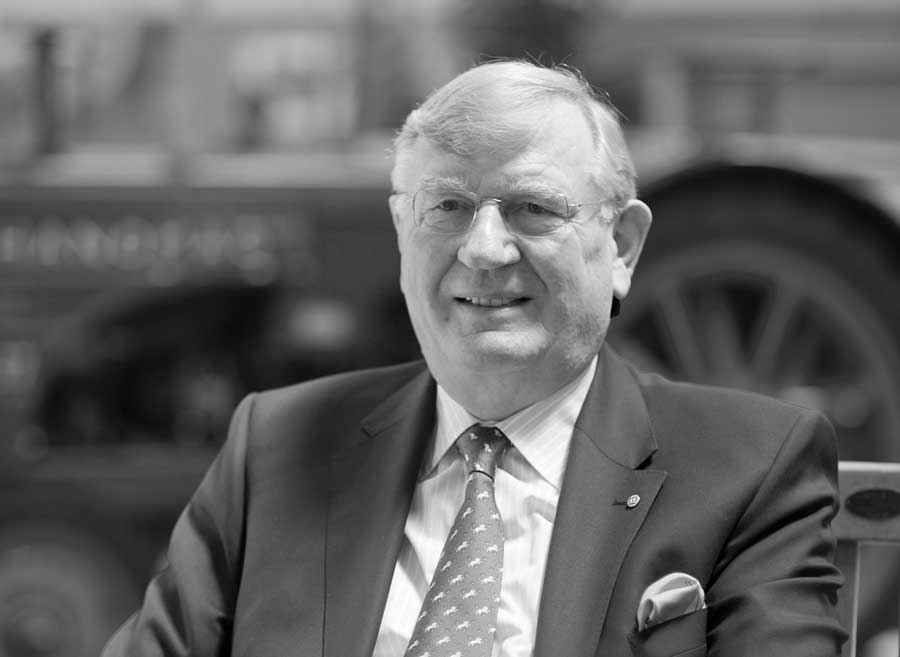High-capacity vehicles are more efficient and productive than regular heavy-goods vehicles as they can consolidate freight from smaller trucks, consuming less fuel and producing less emissions per unit of cargo transported. They are a cost-effective solution to reduce emissions from road freight, also making more efficient use of existing infrastructure.
According to a new ACEA paper, experience from countries already using high-capacity vehicles shows positive results, and CO2 reductions have been confirmed in practice. In the European Union, high-capacity vehicles are already allowed and used in Belgium, Denmark, Finland, most German federal states, the Netherlands, Portugal, Spain and Sweden.
Current Situation
Transport demand forecast
Demand for freight transport is expected to grow substantially in the European Union over the next few decades. The anticipated increase in infrastructure capacity of any mode will not, on its own, be enough to meet projected future demand. Introducing a High Capacity Transport (HCT) system for Europe is one of the most practical solutions to accommodate part of this growth, as it would allow high-capacity vehicles, which are specifically designed to carry more freight than standard vehicle combinations, to use dedicated parts of the EU road network.

Climate change
Reaching the ambitious COP21 objectives agreed in Paris depends largely on the development of cost-efficient, high-performance technological and non-technological solutions to reduce CO2 emissions. In the European Union, heavy-duty vehicles are responsible for about 5% of total CO2 emissions of which roughly 50% is generated by regional delivery and long-haul transport. For these kind of operations, an HCT system provides a cost-effective solution to reduce carbon emissions without having to modify or extend Europe’s existing road infrastructure.
Benefits
Decarbonisation of road freight transport and infrastructure savings
High-capacity vehicles are more efficient and productive than regular heavy-goods vehicles, as they can consolidate freight from smaller trucks, consume less fuel and produce less emissions per unit of cargo transported. This makes them more environmentally friendly than standard vehicle
combinations. Policy that allows for high-capacity vehicles (HCVs) is both a practical and a cost- effective way to reduce CO2 emissions.
Depending on vehicle configuration and usage, high-capacity vehicles can reduce carbon emissions at the individual vehicle level in the range of 15 to 40 percent. The overall savings at the European level depend on the market penetration of these vehicles and whether HCVs can be used in a regional and cross-border context.
Given the difficulty in expanding existing infrastructure and financing investments in new infrastructure, the efficiency of existing road infrastructure needs to be maximised. Significant increases in transport capacity can be accomplished without having to expand the infrastructure by means of an HCT system, simply by making more efficient use of the existing road network.

Intermodality
There is strong evidence that HCVs can be of benefit to rail transport in an intermodal context when trucks and trains work together. Indeed, the pre- and post-road haulage of intermodal loading units and bulk commodities by high-capacity vehicles for further transport via railways will improve the overall efficiency of intermodal transport. The important contribution that HCVs can make to the improvement of efficiency and fuel consumption has been recently recognised by the European Parliament, calling on the European Commission to introduce incentives to stimulate so-called ‘longliners’.
Societal benefits
Policy makers are often not equipped with the right data to quantify the societal benefits of high-capacity vehicles. Attempts to introduce HCVs are often dismissed based on emotional arguments due to a lack of objective metrics and data about the societal benefits. In this context, it is crucial that policy decisions are underpinned by detailed cost-benefit analyses. Some proposals to assess the system-level benefits of HCVs have already been developed in the United States (Woodrooffe 2016), Spain (Ortega and others 2014) and Sweden (CLOSER 2013).
The following parameters should be considered for assessing the societal impact of the use of an HCT system: traffic casualties, health effects (eg respiratory diseases), carbon emissions, truck trip reduction (exposure reduction and congestion mitigation), congestion reduction, infrastructure consumption (road and bridge consumptions per tonne-km of freight or per m3-km of freight), and the economic impact (improved productivity and greater competitiveness at national and international levels).
Driver shortage
High Capacity Transport permits the consolidation of freight in fewer vehicles, thus offering a technical solution to the lack of truck drivers and easing the current and projected driver shortage.
Competitiveness of the EU versus other world regions
A higher penetration of HCVs in the EU will improve the competitiveness of the Union by reducing transport costs, delivering more efficient logistics solutions and introducing advanced vehicle technologies. These positive developments come on top of the safety and environmental benefits with respect to both emission reductions and the better usage of the existing road infrastructure.
Challenges
The modal shift, road safety and bridges are often perceived as important barriers to the introduction of high-capacity vehicles. Indeed, the greatest potential risk facing HCVs is careless implementation without properly crafted policy in place to guide their usage and to ensure that vehicles comply with weight and dimension limits and satisfy dynamic vehicle requirements defined by performance-based standards (PBS). PBS are an effective means of objectively assessing vehicle design and regulatory compliance, ensuring a good fit between the vehicle and infrastructure.
Modal shift
Existing real-world operation studies have shown that HCVs attract little to no freight from railways and inland waterways. There are different reasons for that, such as the type and value of the cargo and the need for door-to-door transport, but also reasons related to railway terminals and their capacity, timetables, lead times and transport time. There is strong evidence, however, that HCVs instead replace smaller, less efficient trucks in segments of the market servicing intensively used routes, which is one of the goals of creating a European HCT system.
The expected growth of the European freight transport market over the next decades requires both better intermodal transport solutions as well as high-capacity vehicles to improve the efficiency and competitiveness of the EU economy as a whole. Moreover, increasing demand for sea transport will require the use of HCVs for the intermodal transport of shipping containers.
Road safety
Practice has shown that HCVs have a better safety performance than regular heavy-goods vehicles. Contrary to public perception, all relevant data, research, tests and experience (over many years and from various countries) show that the safety risk of well-regulated high-capacity vehicles is lower than that of standard vehicle combinations. Hence, it is important to take safety-related measures to increase the acceptance of HCVs, which could include new safety requirements and special driver training or requirements for example. It is also important to monitor the safety performance of HCVs by collecting and reporting relevant data and, if necessary, modify policies based on evidence.
Bridges and roads
All vehicles, including high-capacity vehicles, must comply with existing road and bridge loading regulations in the same way that all other heavy-duty vehicles must. Road authorities regulate axle weight and configuration to protect roads and bridges, and HCVs must comply with these regulations. Given that these high-capacity vehicles, which carry more freight, are longer and the total load is distributed over more axles than is the case with standard vehicles, HCVs have the added benefit of causing less road damage per tonne cargo transported than regular trucks.
Infrastructure access, monitoring, compliance and enforcement
Free and unrestricted use of longer and heavier vehicles on public roads is not an option. High-capacity vehicles are expected to operate only on a dedicated road network. To that end, the introduction of ICT-based solutions collecting data from vehicles to monitor their position, status and compliance in real time are recommended.
The Australian Intelligent Access Program (IAP) is a good example of a national programme whereby heavy-vehicle operators agree to remote tracking of the movement and location of their vehicles, in order to support monitoring, compliance and enforcement of existing access rules.
Incentives to support market introduction
In order to increase the market penetration of high-capacity vehicles, including all the benefits they deliver, it is important that HCVs are not (financially) penalised for their higher capacity. Indeed, while six regular vehicle combinations can be replaced by four high-capacity vehicles, or even three in some cases, HCVs should not be disadvantaged compared to regular heavy-goods vehicles.
On the contrary, they should be incentivised instead. Cross-border usage of HCVs in connection with regional deliveries and long-haul operations can have an important positive impact on their volume and weight utilisation, thereby further improving transport effectiveness as well as the associated environmental and economic benefits.
What needs to be done
The introduction of a High Capacity Transport (HCT) system in the European Union is a cost- effective solution to reduce emissions from road freight while also improving transport efficiency – including the more efficient use of existing infrastructure, reducing congestion and providing significant societal benefits well beyond carbon reduction; such as health and safety improvements.
Experience from countries already using high-capacity vehicles shows positive results, and CO2 reductions have been confirmed in practice. In the European Union, high-capacity vehicles in the form of European Modular System (EMS) combinations are allowed and used in Belgium, Denmark, Finland, most German federal states, the Netherlands, Portugal, Spain and Sweden.
In order to allow for the introduction of high-capacity vehicles across the entire European Union, policy makers should ensure that:
- The restrictive interpretations of EU legislation regarding cross-border use of EMS combinations are abandoned.
- The European Commission applies harmonised EU requirements for HCVs.
- Future EU regulations on HCT are based on PBS for both vehicles and road infrastructure.
- In addition, it should be considered to use EU-funded research projects to address this.
- The wider introduction of EMS combinations is supported by promoting trials, pilot programmes and research.
- The revision of the 2011 white paper on transport policy is used as an opportunity to facilitate the introduction of an HCT system in the EU.










